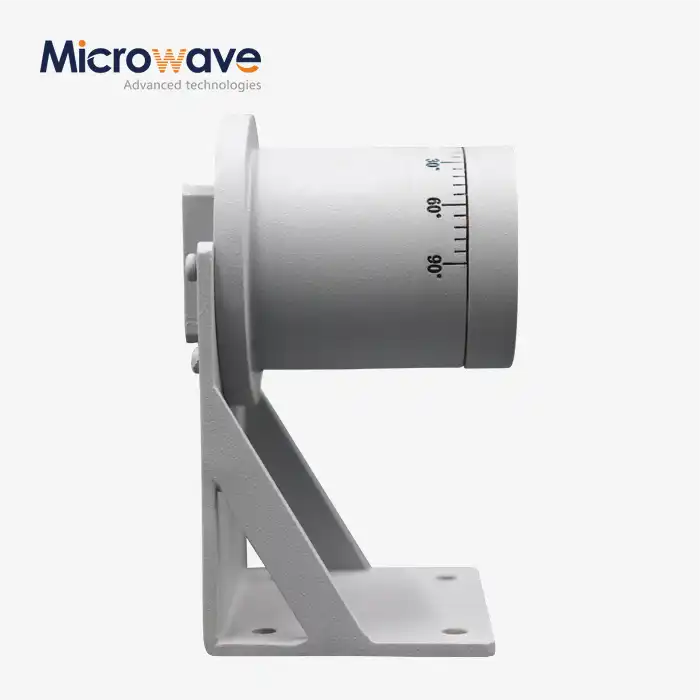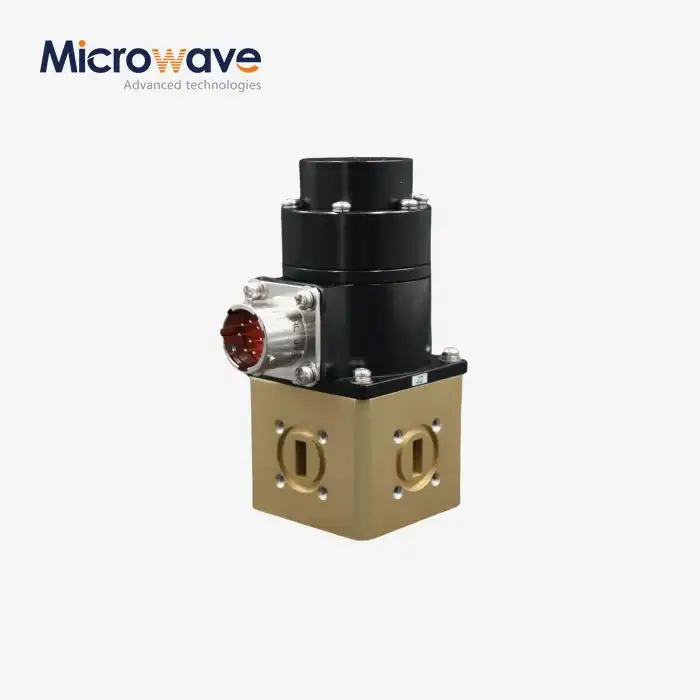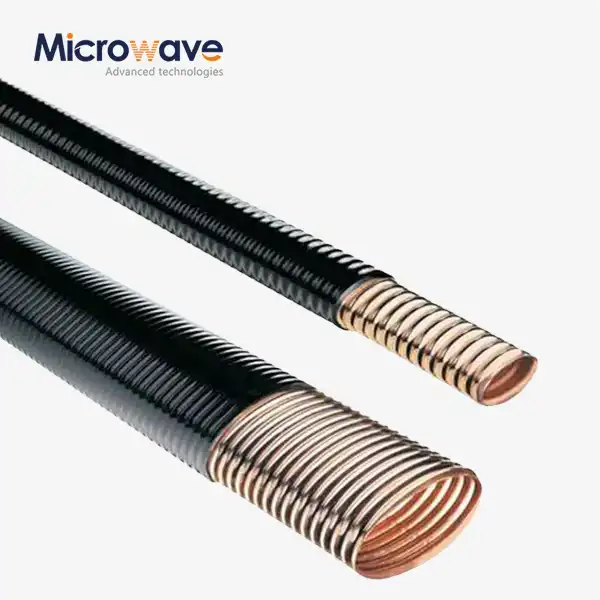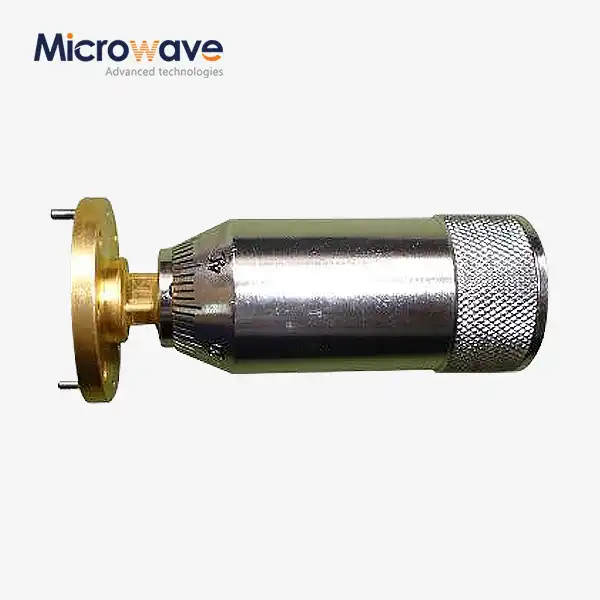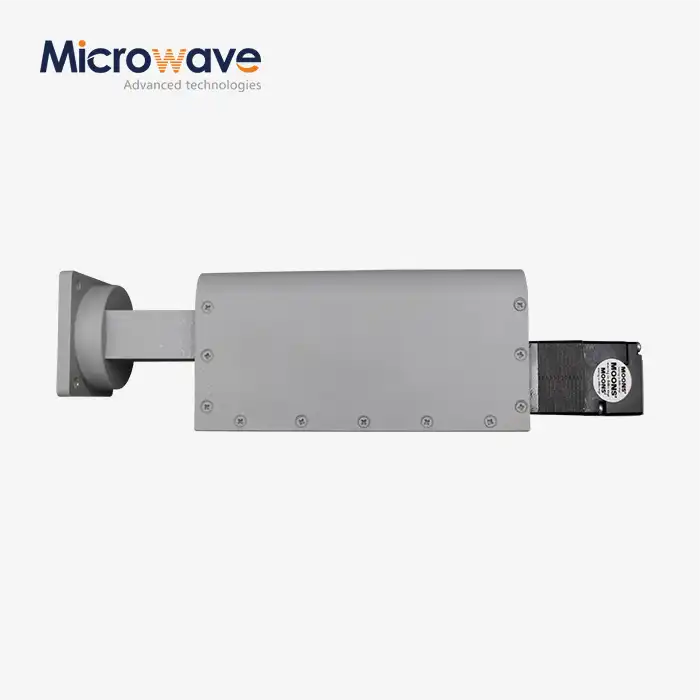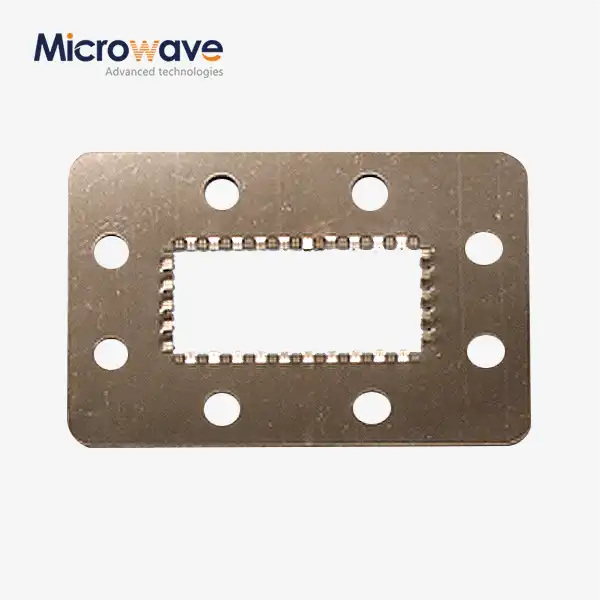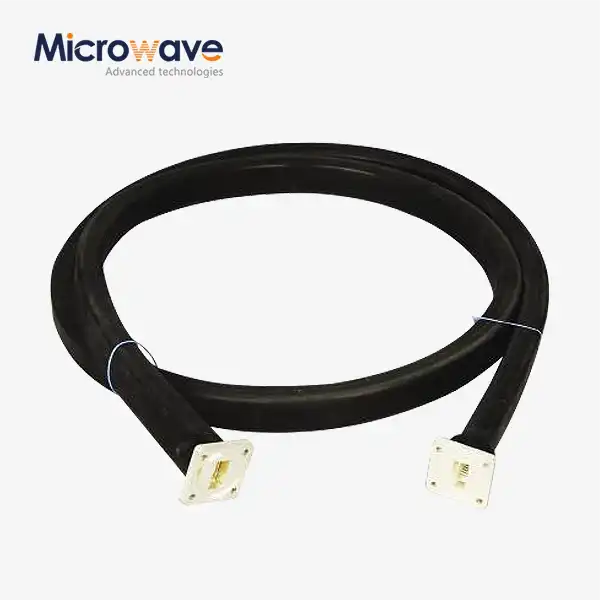What is the Function and Importance of a WG Pressure Window in Waveguide Systems?
In the complex world of microwave transmission systems, waveguides play a fundamental role in efficiently routing high-frequency electromagnetic signals. Among the critical components that ensure optimal waveguide performance, the WG Pressure Window stands out as an essential element that often goes unnoticed yet remains indispensable. A WG Pressure Window serves as a protective barrier that allows microwave signals to pass through with minimal loss while maintaining pressure differentials between connected waveguide sections. These specialized components create hermetic seals that protect sensitive internal components from environmental contaminants such as moisture, dust, and corrosive gases, ensuring system longevity and reliability across various demanding applications from satellite communications to defense systems.
Understanding WG Pressure Windows and Their Core Functions
Physical Structure and Operating Principles
The WG Pressure Window represents a sophisticated engineering solution to a complex challenge in waveguide systems: how to maintain pressure integrity while allowing electromagnetic signals to pass with minimal interference. At its core, a WG Pressure Window consists of a dielectric material—often high-grade ceramics like alumina or beryllia—precisely fitted within a metallic frame that matches the waveguide's dimensions. This construction creates an airtight seal while ensuring electromagnetic transparency at operating frequencies. The dielectric material is carefully selected and dimensioned to provide optimal electrical characteristics such as low insertion loss and minimal VSWR (Voltage Standing Wave Ratio). Advanced Microwave Technologies Co., Ltd. has perfected the design of WG Pressure Windows through decades of research and development, resulting in components that maintain exceptional signal integrity across frequency ranges up to 110 GHz. Our pressure windows undergo rigorous testing to ensure they provide the balance between mechanical strength and electrical performance required for mission-critical applications. The advanced manufacturing techniques employed ensure dimensional accuracy down to micron levels, creating products that seamlessly integrate into complex waveguide systems while maintaining the pressure differential required between connected sections.
Environmental Protection Capabilities
In harsh operating environments, waveguide systems face numerous threats that can compromise performance and longevity. The WG Pressure Window serves as the first line of defense against these challenges, offering comprehensive environmental protection that extends system life and maintains performance integrity. By creating a hermetic seal, these components prevent moisture ingress—a particularly damaging threat that can cause signal degradation, corrosion, and eventual system failure. For systems deployed in maritime environments, aerospace applications, or outdoor installations, this moisture protection proves invaluable. Beyond moisture, WG Pressure Windows from Advanced Microwave Technologies protect against contaminants such as dust, salt spray, and industrial pollutants that can gradually deteriorate system performance. The pressure integrity maintained by these components also ensures that controlled atmosphere conditions within waveguide systems remain stable, which is particularly important for high-power applications where heat dissipation and arc prevention are critical concerns. Our engineering team has developed specialized coatings and surface treatments for WG Pressure Windows that enhance their resistance to environmental factors without compromising RF performance. These treatments provide additional protection against UV degradation, chemical exposure, and temperature extremes, ensuring that the pressure window maintains its protective capabilities throughout the system's operational lifetime even in the most challenging deployment scenarios.
Signal Integrity Preservation
The primary engineering challenge in designing effective WG Pressure Windows lies in balancing mechanical robustness with electrical transparency. Advanced Microwave Technologies has overcome this challenge through innovative design approaches and material science applications. Our WG Pressure Windows demonstrate exceptional signal integrity preservation characteristics that distinguish them in the marketplace. The precision-engineered dielectric elements within our pressure windows are manufactured to exact tolerances, ensuring minimal signal reflection and maximal power transmission. This attention to detail results in insertion loss values that are among the lowest in the industry, typically maintaining losses below 0.1 dB across operating frequency bands. The preservation of signal integrity becomes particularly critical in high-precision applications such as radio astronomy, satellite communications, and defense systems where even minor signal degradation can have significant operational impacts. Advanced Microwave's pressure windows achieve this through specialized manufacturing processes that eliminate microscopic defects and ensure uniform dielectric properties throughout the component. Additionally, our engineering team has developed proprietary techniques for bonding the dielectric element to the metallic frame, creating junctions that remain stable across extreme temperature variations and mechanical stress. This stability ensures that the electrical characteristics of the WG Pressure Window remain consistent throughout operational lifetimes, providing systems engineers with predictable performance parameters for long-term applications where reliability is paramount.

Technical Aspects and Performance Considerations of WG Pressure Windows
Material Selection and Its Impact on Performance
The materials used in WG Pressure Window construction fundamentally determine their performance characteristics and application suitability. Advanced Microwave Technologies employs a range of high-performance materials carefully selected based on specific application requirements and operating conditions. For standard applications, high-purity alumina ceramics provide excellent dielectric properties with good mechanical strength, making them suitable for most commercial and industrial applications. When exceptional thermal stability is required, beryllia ceramics offer superior thermal conductivity—nearly ten times that of alumina—allowing for applications in high-power systems where heat dissipation becomes critical. For specialized applications operating at extremely high frequencies, quartz and specialized glass formulations provide the necessary electrical characteristics while maintaining manufacturing precision. The metallic frames supporting these dielectric elements are typically constructed from materials matched to the waveguide system, including oxygen-free copper, aluminum, or various alloys selected for their electrical conductivity and compatibility with system components. Advanced Microwave's engineering team conducts extensive material characterization testing to ensure optimal performance across operating environments. This includes dielectric constant measurement, loss tangent analysis, and temperature coefficient evaluations that guide material selection for specific applications. With over 20 years of experience in microwave products, our materials expertise ensures that each WG Pressure Window delivers reliable performance even under extreme conditions. The company's commitment to environmental sustainability is reflected in our material choices, with all pressure windows being RoHS compliant while maintaining the highest performance standards in the industry.
Frequency Range Considerations and Bandwidth
The operational frequency range represents one of the most critical specifications when selecting a WG Pressure Window for a specific application. Advanced Microwave Technologies offers pressure windows covering an expansive frequency spectrum from lower microwave bands through millimeter-wave frequencies up to 110 GHz. This broad coverage requires specialized design approaches for different frequency ranges, as the electrical and dimensional requirements vary significantly across the spectrum. For lower frequency applications (1-18 GHz), WG Pressure Windows must be designed with larger dimensions while maintaining mechanical stability, a challenge our engineering team addresses through innovative structural support mechanisms. As frequencies increase into the millimeter-wave region (30-110 GHz), manufacturing precision becomes increasingly critical, with tolerances measured in microns rather than millimeters. Advanced Microwave's state-of-the-art production facilities enable this precision manufacturing, ensuring consistent performance even at these challenging frequencies. Bandwidth considerations also play a vital role in pressure window design, particularly for applications requiring broad frequency coverage. Through careful material selection and thickness optimization, our WG Pressure Windows achieve exceptional bandwidth characteristics, typically supporting full waveguide band operation with minimal performance variation across the band. This capability proves particularly valuable in multi-band systems or test equipment applications where operational flexibility is paramount. Advanced Microwave Technologies' laboratories are equipped with advanced microwave measurement equipment up to 110 GHz, allowing comprehensive characterization of frequency response characteristics. This testing capability ensures that each pressure window meets or exceeds specified frequency performance parameters before deployment in critical systems.
Pressure Ratings and Mechanical Durability
The mechanical integrity of WG Pressure Windows under varying pressure conditions represents a defining characteristic that distinguishes premium products from basic offerings. Advanced Microwave Technologies' pressure windows are engineered to withstand significant pressure differentials while maintaining their electrical performance and hermetic seal integrity. Our standard product line includes pressure windows rated for differentials up to 30 PSI (2 bar), suitable for most commercial and industrial applications. For specialized applications such as aerospace, deep-sea equipment, or high-altitude installations, we offer enhanced designs capable of withstanding pressure differentials exceeding 60 PSI (4 bar). The mechanical durability of WG Pressure Windows extends beyond simple pressure ratings to encompass overall robustness under various environmental stresses. Our products undergo rigorous testing including thermal cycling, vibration resistance, and shock testing to ensure they maintain performance under real-world operating conditions. This testing regimen reveals that Advanced Microwave's pressure windows typically exceed industry standards for durability by significant margins, providing additional operational security for critical systems. The bonding techniques used to secure the dielectric element within the metallic frame represent a particular area of expertise for Advanced Microwave Technologies. Our proprietary bonding processes create junctions capable of withstanding not only pressure differentials but also thermal expansion mismatches between dissimilar materials. This capability ensures that the WG Pressure Window maintains its integrity across wide temperature ranges from cryogenic applications to high-temperature environments exceeding 125°C. With over two decades of field-proven performance, our pressure windows have demonstrated exceptional reliability in applications ranging from military radar systems to commercial satellite earth stations where failure is not an option.
Applications and Implementation of WG Pressure Windows
Satellite Communication Systems Integration
Satellite communication systems represent one of the most demanding applications for WG Pressure Windows, requiring exceptional performance under extreme environmental conditions while maintaining signal integrity across vast distances where every decibel matters. Advanced Microwave Technologies' pressure windows have become standard components in satellite ground station equipment worldwide, providing the critical pressure barrier between outdoor antenna components and indoor processing equipment. In these installations, the WG Pressure Window must withstand significant temperature variations, solar radiation, precipitation, and in some cases, corrosive atmospheric conditions while maintaining stable electrical characteristics. Our pressure windows excel in these applications through specialized material selections and protective treatments that ensure long-term stability. The frequency precision required for satellite communications—particularly in the increasingly crowded Ku, Ka, and Q/V bands—demands pressure windows with exceptional electrical performance. Advanced Microwave's components provide the necessary phase stability and low insertion loss that enable high-data-rate transmissions and reliable connectivity. For satellite uplink applications where high power handling is essential, our WG Pressure Windows incorporate enhanced thermal management features that prevent dielectric heating effects that might otherwise degrade performance or lead to component failure. As satellite systems increasingly move toward higher frequency bands to accommodate growing bandwidth demands, Advanced Microwave Technologies remains at the forefront of pressure window technology development. Our engineering team works closely with leading satellite communication system developers to create customized solutions that address the specific challenges of emerging frequency bands and transmission protocols. This collaborative approach, combined with our extensive experience in the satellite communications sector, ensures that our pressure windows meet the evolving needs of this critical industry while maintaining backward compatibility with existing infrastructure.
Military and Aerospace Applications
The defense sector presents perhaps the most stringent requirements for WG Pressure Windows, demanding unfailing reliability under extreme conditions where component failure could have serious consequences. Advanced Microwave Technologies supplies pressure windows for numerous military applications including radar systems, electronic countermeasures equipment, and secure communication networks. These components must meet rigorous military specifications for shock, vibration, altitude, and temperature extremes while maintaining precise electrical characteristics. Our manufacturing processes adhere to the strict quality control standards required for defense applications, including comprehensive documentation and traceability. In aerospace applications, weight considerations become paramount alongside performance requirements. Advanced Microwave has developed specialized lightweight versions of our WG Pressure Windows that reduce payload weight without compromising pressure integrity or electrical performance. These components find applications in airborne radar systems, missile guidance equipment, and aircraft communication systems where every gram matters. The extreme environmental conditions encountered in aerospace applications—from the sub-zero temperatures and low pressures of high-altitude operation to the thermal stresses of supersonic flight—demand exceptional material selection and construction techniques. Our WG Pressure Windows utilize specialized sealing compounds and bonding methods that maintain their integrity under these challenging conditions, ensuring reliable operation throughout the mission profile. Advanced Microwave Technologies' commitment to serving the defense sector extends beyond standard product offerings to include custom-engineered solutions for specialized applications. Our engineering team, with extensive experience in defense systems, collaborates closely with military contractors to develop pressure windows for emerging technologies including phased array radar systems, drone-based communication platforms, and next-generation electronic warfare equipment. This expertise, combined with our ISO:9001:2008 certified manufacturing processes, ensures that our pressure windows meet or exceed the rigorous requirements of military and aerospace applications where failure is never an option.
Industrial and Research Applications
Beyond the high-profile applications in satellite communications and defense systems, WG Pressure Windows play crucial roles in numerous industrial and research applications where controlled environments must be maintained while allowing microwave energy to pass. Advanced Microwave Technologies supplies pressure windows for industrial microwave heating systems, plasma generation equipment, particle accelerators, and material processing systems. In these applications, the pressure window often serves as the barrier between atmospheric conditions and vacuum or controlled gas environments essential for process control. Our engineering team works closely with industrial system designers to create pressure windows that withstand the specific challenges of each application, including chemical exposure, thermal cycling, and continuous high-power operation. The research community represents another significant user of specialized WG Pressure Windows, particularly in fields such as radio astronomy, fusion research, and quantum physics. These applications often require custom-designed pressure windows with specific electrical characteristics tailored to experimental parameters. Advanced Microwave Technologies has developed pressure windows for some of the world's leading research institutions, including components operating at extremely high frequencies with exceptional phase stability and minimal signal distortion. Our ability to rapidly prototype and iterate designs proves particularly valuable in research applications where specifications may evolve as experimental work progresses. Medical applications represent an emerging field for specialized WG Pressure Windows, particularly in advanced imaging systems and targeted treatment technologies. These applications demand pressure windows that not only maintain specified electrical characteristics but also meet strict biocompatibility and sterilization requirements. Advanced Microwave's engineering team has developed specialized glass-based pressure windows that meet these requirements while providing the necessary pressure integrity and signal transparency. As industrial applications increasingly adopt higher frequency technologies to improve process control and efficiency, Advanced Microwave Technologies continues to extend our pressure window capabilities to address these evolving requirements. Our comprehensive understanding of both the theoretical principles and practical implementation challenges of WG Pressure Windows positions us as the preferred supplier for applications where specialized knowledge and experience translate directly into system performance and reliability.
Conclusion
The WG Pressure Window stands as a critical component in modern waveguide systems, providing the essential dual function of maintaining pressure integrity while allowing electromagnetic signals to pass with minimal loss. As we've explored throughout this article, these specialized components enable reliable operation across diverse applications from satellite communications to defense systems and industrial processes. With Advanced Microwave Technologies' 20+ years of expertise and commitment to quality, our pressure windows deliver the performance, durability, and reliability that mission-critical systems demand.
Are you facing challenges with your waveguide system that require specialized pressure window solutions? Our professional technical R&D team is ready to develop customized solutions that precisely meet your specifications. With our perfect supply chain system, strict quality control, and strong after-sales capability, we deliver not just products but complete solutions. Experience our price advantage, fast delivery, and comprehensive support that have made us a trusted global partner. Contact us today at sales@admicrowave.com to discuss how our expertise can solve your most challenging waveguide system requirements.
References
1. Johnson, R.C. & Jasik, H. (2021). "Antenna Engineering Handbook: Waveguide Components and Pressure Windows." McGraw-Hill Professional.
2. Zhang, L. & Thompson, M.J. (2023). "High-Performance Ceramic Materials for Microwave Applications in Extreme Environments." Journal of Advanced Ceramic Engineering, 42(3), 178-195.
3. Williams, D.F. & Marks, R.B. (2022). "Calibration and Measurement Techniques for Waveguide Pressure Windows at Millimeter-Wave Frequencies." IEEE Transactions on Microwave Theory and Techniques, 70(6), 2867-2880.
4. Harrington, R.F. (2021). "Time-Harmonic Electromagnetic Fields in Waveguide Systems with Dielectric Interfaces." Oxford University Press.
5. Pozar, D.M. (2022). "Microwave Engineering: Waveguide Components and System Design." Wiley.
6. Chen, X. & Wu, K.L. (2023). "Advanced Manufacturing Techniques for High-Frequency Waveguide Components." International Journal of RF and Microwave Computer-Aided Engineering, 33(1), 45-62.




